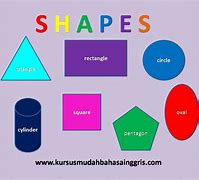
Clinical significance
A hip fracture is a break that occurs in the upper part of the femur.[33] Symptoms may include pain around the hip particularly with movement and shortening of the leg.[33] The hip joint can be replaced by a prosthesis in a hip replacement operation due to fractures or illnesses such as osteoarthritis. Hip pain can have multiple sources and can also be associated with lower back pain.
At the 2022 Consumer Electronics Show, a company named Safeware announced an airbag belt that is designed to prevent hip fractures among such uses as the elderly and hospital patients.[34]
Abnormal orientation of the acetabular socket as seen in hip dysplasia can lead to hip subluxation (partial dislocation), degeneration of the acetabular labrum. Excessive coverage of femoral head by the acetabulum can lead to pincer-type femoro-acetabular impingement (FAI).[7]
Perbedaan Waist dan Hips
Banyak yang sering keliru membedakan antara ukuran waist dan hip. Keduanya memang merupakan bagian penting dalam pengukuran tubuh, terutama saat memilih atau membuat pakaian.
Waist adalah lingkar pinggang, yakni bagian tersempit tubuh yang terletak di antara dada dan pinggul. Area ini biasanya berada sedikit di atas pusar dan di bawah tulang rusuk terakhir.
Hip, di sisi lain, adalah ukuran lingkar pinggul yang diambil di bagian terlebar tubuh, tepatnya di sekitar bokong.
Ukuran waist biasanya digunakan untuk pakaian yang menonjolkan atau menyesuaikan bagian tengah tubuh, seperti celana high waist atau gaun dengan siluet yang menonjolkan pinggang.
Sebaliknya, ukuran hip lebih relevan untuk memastikan kenyamanan dan kecocokan pakaian yang fokus pada bagian bawah tubuh, seperti celana panjang, rok pensil, atau gaun bodycon.
Secara fungsional, kedua ukuran ini juga membantu menentukan proporsi tubuh dan bentuk pakaian.
Ukuran waist mencerminkan bentuk tubuh bagian atas, yang sering digunakan saat menentukan tipe tubuh (seperti hourglass body atau rectangle body).
Sedangkan ukuran hip memberikan gambaran tentang proporsi tubuh bagian bawah, yang akan memengaruhi pilihan model pakaian seperti rok A-line atau celana skinny.
Selain itu, mengetahui perbedaan waist dan hip sangat penting saat berbelanja online, di mana panduan ukuran sering mencantumkan kedua ukuran ini untuk memastikan produk pas sesuai bentuk tubuh.
Apa Arti Hips dalam Konteks Ukuran Baju?
Hips adalah ukuran lingkar pinggul yang diambil dari bagian terlebar tubuh di sekitar area panggul. Ini biasanya berada sekitar 15-20 cm di bawah pinggang, tergantung pada bentuk tubuh seseorang.
Ukuran hips sangat penting karena area ini merupakan salah satu titik utama dalam menentukan proporsi tubuh, terutama saat memilih atau membuat pakaian.
Lingkar pinggul sering menjadi perhatian utama dalam desain busana, terutama untuk model pakaian seperti celana, rok pensil, atau gaun bodycon.
Jika memilih pakaian dengan ukuran hips yang kurang tepat, pakaian mungkin tidak pas sehingga tak terasa nyaman saat dikenakan. Hal ini bukan tak mungkin meruntuhkan kepercayaan diri Knittopreneurs saat beraktivitas.
Baca Juga: Cara Mengukur Lingkar Tubuh dengan Akurat
Memilih Pakaian yang Fit dengan Tubuh
Ukuran hips yang tepat akan membuat Knittopreneurs merasa nyaman saat berpakaian, terutama untuk pakaian dengan desain fit body seperti celana skinny jeans atau rok bodycon.
Pakaian yang sesuai dengan ukuran pinggul memungkinkanmu bergerak tetap bebas tanpa rasa sempit atau sesak.
Selain itu, pakaian dengan ukuran hips yang pas juga membantu menonjolkan siluet tubuh secara proporsional. Dengan memilih pakaian yang sesuai, Knittopreneurs dapat tampil lebih percaya diri karena OOTD tampak maksimal.
Panduan Ukuran Celana Berdasarkan Waist dan Hips
Agar gak bingung menentukan ukuran celana, berikut ini standar ukuran celana yang bisa Knittopreneurs jadikan sebagai referensi:
Baca Juga: 6 Tips Menentukan Ukuran Baju Wanita dengan Mudah
Cara Mengukur Hips dengan Tepat
Mengukur ukuran pinggul (hips) sebenarnya cukup sederhana, Knittopreneurs!
Baca Juga: Bust Artinya dalam Ukuran Baju, Bagaimana Cara Mengukurnya?
Setelah melihat pembahasan ini, Knittopreneurs sudah memahami hips adalah ukuran yang penting dalam memilih pakaian, terutama untuk celana, rok, atau gaun. Dengan memahami ukuran hips, pakaian pun akan terasa pas dan nyaman. Yuk, coba di rumah demi mendapatkan pakaian dengan ukuran yang tepat!
TOKO BAHAN KAOS KNITTO BANDUNG
Jl. Kebon Jukut No. 15, Bandung, Jawa Barat, Indonesia
Telepon: (022) 4214962
Jl. Holis No. 35, Bandung, Jawa Barat, Indonesia
Telepon : (022) 20589089
TOKO BAHAN KAOS KNITTO YOGYAKARTA
Jl. HOS Cokroaminoto 162A, Yogyakarta
Telepon : (0274) 5017513
TOKO BAHAN KAOS KNITTO SEMARANG
Jl. Jenderal Sudirman No. 300 – 302, Semarang
Telepon: (024) 760-728-5
TOKO BAHAN KAOS KNITTO SURABAYA
Jl. Dr. Ir. H. Soekarno No 27, Surabaya (MERR)
Telepon: (031)5937700
Official WhatsApp: 082120003035
Email : [email protected]
Muscles and movements
The hip muscles act on three mutually perpendicular main axes, all of which pass through the center of the femoral head, resulting in three degrees of freedom and three pair of principal directions: Flexion and extension around a transverse axis (left-right); lateral rotation and medial rotation around a longitudinal axis (along the thigh); and abduction and adduction around a sagittal axis (forward-backward);[31] and a combination of these movements (i.e. circumduction, a compound movement in which the leg describes the surface of an irregular cone).[24] Some of the hip muscles also act on either the vertebral joints or the knee joint, that with their extensive areas of origin and/or insertion, different part of individual muscles participate in very different movements, and that the range of movement varies with the position of the hip joint.[24] Additionally, the inferior and Superior gemelli muscles assist the obturator internus and the three muscles together form the three-headed muscle known as the triceps coxae.[32][24]
The movements of the hip joint is thus performed by a series of muscles which are here presented in order of importance[24] with the range of motion from the neutral zero-degree position[31] indicated:
Mengapa Hips adalah Ukuran yang Penting?
Memilih pakaian seperti celana, terutama secara online, memang cukup tricky. Terkadang, ukuran hip sudah sesuai tapi bagian pahanya terlalu ketat, ataupun sebaliknya. Inilah mengapa hips adalah ukuran yang sangat penting diperhatikan:
Agar Terasa Nyaman saat Dikenakan
Hips adalah ukuran yang krusial dalam memilih pakaian agar sesuai dengan bentuk tubuh. Baik itu celana panjang, rok, atau gaun, ukuran pinggul memastikan pakaian pas dan nyaman saat dikenakan.
Jika ukuran terlalu kecil, pakaian akan terasa sempit di area pinggul, sementara ukuran terlalu besar bisa membuat pakaian terlihat longgar dan kurang menarik.
Memahami ukuran hips juga membantu dalam berbelanja online. Banyak toko online mencantumkan panduan ukuran pinggul dalam tabel ukuran mereka.
Dengan mengetahui ukuran hips, Knittopreneurs dapat lebih mudah menemukan pakaian yang sesuai tanpa perlu khawatir salah ukuran.
kb.1 pinggul.2 pangkal paha.-ks. Sl. : modern.-kseru.H.. h. hurrah Hip. hip. hura! Hidup! Horas! -hipped ks. Sl, : keranjingan.
Anatomical region between the torso and the legs, holding the buttocks and genital region
This article is about the anatomical description of the hip. For the cultural description of buttocks, see
. For other uses, see
In vertebrate anatomy, the hip, or coxa[1] (pl.: coxae) in medical terminology, refers to either an anatomical region or a joint on the outer (lateral) side of the pelvis.
The hip region is located lateral and anterior to the gluteal region, inferior to the iliac crest, and lateral to the obturator foramen, with muscle tendons and soft tissues overlying the greater trochanter of the femur.[2] In adults, the three pelvic bones (ilium, ischium and pubis) have fused into one hip bone, which forms the superomedial/deep wall of the hip region.
The hip joint, scientifically referred to as the acetabulofemoral joint (art. coxae), is the ball-and-socket joint between the pelvic acetabulum and the femoral head. Its primary function is to support the weight of the torso in both static (e.g. standing) and dynamic (e.g. walking or running) postures. The hip joints have very important roles in retaining balance, and for maintaining the pelvic inclination angle.
Pain of the hip may be the result of numerous causes, including nervous, osteoarthritic, infectious, traumatic, and genetic.
The hip joint, also known as a ball and socket joint, is formed by the acetabulum of the pelvis and the femoral head, which is the top portion of the thigh bone (femur). It allows for a wide range of movement and stability in the lower body.[3]
The proximal femur is largely covered by muscles and, as a consequence, the greater trochanter is often the only palpable bony structure in the hip region.[4]
The hip joint or coxofemoral joint[5][6] is a ball and socket synovial joint formed by the articulation of the rounded head of the femur and the cup-like acetabulum of the pelvis.[7] The socket of the acetabulum is pointing downwards and anterolaterally. The socket is also turned such that the outer edge of its roof is more lateral than outer edge of the floor.[7] It forms the primary connection between the bones of the lower limb and the axial skeleton of the trunk and pelvis. Both joint surfaces are covered with a strong but lubricated layer called articular hyaline cartilage.
The cuplike acetabulum forms at the union of three pelvic bones — the ilium, pubis, and ischium.[8] The Y-shaped growth plate that separates them, the triradiate cartilage, is fused definitively at ages 14–16.[9] It is a special type of spheroidal or ball and socket joint where the roughly spherical femoral head is largely contained within the acetabulum and has an average radius of curvature of 2.5 cm.[10] The acetabulum grasps almost half the femoral ball, a grip deepened by a ring-shaped fibrocartilaginous lip, the acetabular labrum, which extends the joint beyond the equator.[8] The centre of the acetabulum (fovea) does not articulate to anything. Instead, it is lined with fat pad and attached to ligamentum teres. The acetabular labrum is horse-shoe shaped. Its inferior notch is bridged by transverse acetabular ligament.[7] The joint space between the femoral head and the superior acetabulum is normally between 2 and 7 mm.[11]
The head of the femur is attached to the shaft by a thin neck region that is often prone to fracture in the elderly, which is mainly due to the degenerative effects of osteoporosis.
Transverse and sagittal angles of acetabular inlet plane.
The acetabulum is oriented inferiorly, laterally and anteriorly, while the femoral neck is directed superiorly, medially, and slightly anteriorly.
Acetabular angle (or Sharp's angle)[12] is the angle between the horizontal line passing through the inferior aspects of triradiate cartilages (Hilgenreiner's line) and another line passing through the inferior angle of triradiate cartilage to superior acetabular rim. The angle measures 35 degrees at birth, 25 degrees at one year of age, and less than 10 degrees by 15 years of age.[13] In adults the angle can vary from 33 to 38 degrees.[14]
The sagittal angle of the acetabular inlet is an angle between a line passing from the anterior to the posterior acetabular rim and the sagittal plane. It measures 7° at birth and increases to 17° in adults.[13]
Wiberg's centre-edge angle (CE angle) is an angle between a vertical line and a line from the centre of the femoral head to the most lateral part of the acetabulum,[15] as seen on an anteroposterior radiograph.[16]
The vertical-centre-anterior margin angle (VCA) is an angle formed from a vertical line (V) and a line from the centre of the femoral head (C) and the anterior (A) edge of the dense shadow of the subchondral bone slightly posterior to the anterior edge of the acetabulum, with the radiograph being taken from the false angle, that is, a lateral view rotated 25 degrees towards becoming frontal.[16]
The articular cartilage angle (AC angle, also called acetabular index[17] or Hilgenreiner angle) is an angle formed parallel to the weight bearing dome, that is, the acetabular sourcil or "roof",[18] and the horizontal plane,[15] or a line connecting the corner of the triangular cartilage and the lateral acetabular rim.[19] In normal hips in children aged between 11 and 24 months, it has been estimated to be on average 20°, ranging between 18° and 25°.[20] It becomes progressively lower with age.[21] Suggested cutoff values to classify the angle as abnormally increased include:
The angle between the longitudinal axes of the femoral neck and shaft, called the caput-collum-diaphyseal angle or CCD angle, normally measures approximately 150° in newborn and 126° in adults (coxa norma).[23][dubious – discuss]
An abnormally small angle is known as coxa vara and an abnormally large angle as coxa valga. Because changes in shape of the femur naturally affects the knee, coxa valga is often combined with genu varum (bow-leggedness), while coxa vara leads to genu valgum (knock-knees).[24]
Changes in the CCD angle is the result of changes in the stress patterns applied to the hip joint. Such changes, caused for example by a dislocation, change the trabecular patterns inside the bones. Two continuous trabecular systems emerging on the auricular surface of the sacroiliac joint meander and criss-cross each other down through the hip bone, the femoral head, neck, and shaft.
On the lateral side of the hip joint the fascia lata is strengthened to form the iliotibial tract which functions as a tension band and reduces the bending loads on the proximal part of the femur.[23]
Proximally, capsule of the hip joint is attached to the edge of the acetabulum, acetabular labrum, and transverse acetabular ligament. Distally, it is attached to the trochanters of the femur and intertrochanteric line anteriorly. Posteriorly, it is attached to a junction between medial two-thirds and lateral one-third of the femoral neck,[7] one finger breadth away from the intertrochanteric crest.[24] From its attachment at the femoral neck, the fibres of the capsule reflected backwards towards the acetabulum, carrying retinacula vessels supplying the femoral head.[7] The part of femoral neck outside the capsule is shorter in front than posteriorly.[24]
The strong but loose fibrous capsule of the hip joint permits the hip joint to have the second largest range of movement (second only to the shoulder) and yet support the weight of the body, arms and head.
The capsule has two sets of fibers: longitudinal and circular.
Extracapsular ligaments. Anterior (left) and posterior (right) aspects of right hip.
Intracapsular ligament. Left hip joint from within pelvis with the acetabular floor removed (left); right hip joint with capsule removed, anterior aspect (right).
The hip joint is reinforced by four ligaments, of which three are extracapsular and one intracapsular.
The extracapsular ligaments are the iliofemoral, ischiofemoral, and pubofemoral ligaments attached to the bones of the pelvis (the ilium, ischium, and pubis respectively). All three strengthen the capsule and prevent an excessive range of movement in the joint. Of these, the Y-shaped and twisted iliofemoral ligament is the strongest ligament in the human body. It has a tensile strength of 350 kg.[24] Iliofemoral ligament is a thickening of the anterior capsule extending from anterior inferior iliac spine to intertrochanteric line.[7] Ischiofemoral ligament is the thickening of posterior capsule of the hip and pubofemoral ligament is the thickening of the inferior capsule.[7] In the upright position, iliofemoral ligament prevents the trunk from falling backward without the need for muscular activity, thus preventing excessive hyperextension. In the sitting position, it becomes relaxed, thus permitting the pelvis to tilt backward into its sitting position. Ischiofemoral prevents excessive extension and the pubofemoral ligament prevents excess abduction and extension.[26]
The zona orbicularis, which lies like a collar around the most narrow part of the femoral neck, is covered by the other ligaments which partly radiate into it. The zona orbicularis acts like a buttonhole on the femoral head and assists in maintaining the contact in the joint.[24] All three ligaments become taut when the joint is extended - this stabilises the joint, and reduces the energy demand of muscles when standing.[27]
The intracapsular ligament, the ligamentum teres, is attached to a depression in the acetabulum (the acetabular notch) and a depression on the femoral head (the fovea of the head). It is only stretched when the hip is dislocated, and may then prevent further displacement.[24] It is not that important as a ligament but can often be vitally important as a conduit of a small artery to the head of the femur, that is, the foveal artery.[28] This artery is not present in everyone but can become the only blood supply to the bone in the head of the femur when the neck of the femur is fractured or disrupted by injury in childhood.[29]
The hip joint is supplied with blood from the medial circumflex femoral and lateral circumflex femoral arteries, which are both usually branches of the deep artery of the thigh (profunda femoris), but there are numerous variations and one or both may also arise directly from the femoral artery. There is also a small contribution from the foveal artery, a small vessel in the ligament of the head of the femur which is a branch of the posterior division of the obturator artery, which becomes important to avoid avascular necrosis of the head of the femur when the blood supply from the medial and lateral circumflex arteries are disrupted (e.g. through fracture of the neck of the femur along their course).[29]
The hip has two anatomically important anastomoses, the cruciate and the trochanteric anastomoses, the latter of which provides most of the blood to the head of the femur. These anastomoses exist between the femoral artery or profunda femoris and the gluteal vessels.[30]



